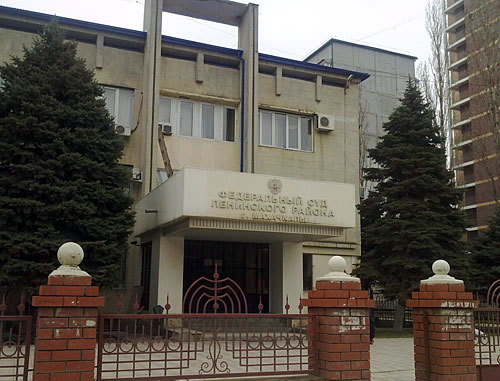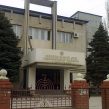
Moscow Strives to Break the Resistance of Dagestani Militants
Publication: Eurasia Daily Monitor Volume: 10 Issue: 201
By:

Militants in Dagestan have been extensively targeting judges in the republic, killing four so far this year. On January 15, Dagestani Supreme Court judge Magomed Magomedov was killed in Makhachkala. On March 9, federal judge Akhmed Rajabov was killed near his home in Izberbash. On September 25, Dagestani Supreme Court judge Mukhtar Shapiev and his son were severely wounded in an attack and died later in the hospital. Meanwhile, on October 9, a judge of the Arbitration Court of Chechnya, Adam Agakhajiev, was found dead in Kabardino-Balkaria (https://www.kavkaz-uzel.ru/articles/232867/), and on November 4, federal judge Zainutdin Madanov was killed in the central part of Makhachkala (https://www.internovosti.ru/text/?id=77559). This targeted assassination was, respectively, the fourth judge killed in Dagestan and the fifth judge killed in the greater North Caucasus so far this year. Madanov was killed in the capital of Dagestan on the city’s busiest street, named after the national hero, Imam Shamil. The attackers fired shots at the judge and his driver before fleeing (https://www.riadagestan.ru/news/incidents/v_makhachkale_ubit_mirovoy_sudya/). Madanov served as a federal judge at the court in Makhachkala’s Lenin district. According to investigators, he previously held the position of deputy chairman of the Lenin district court, (https://www.kavkaz-uzel.ru/articles/232864/).
The wave of murders of judges came as government forces ramped up their efforts to fight the armed resistance movement in the region, particularly in Dagestan. As losses among the militants mount, the insurgency has shifted tactics by attacking soft targets—meaning, in this case, people they had not previously targeted before. At the same time, the murders of the judges should not be automatically attributed to the militants. Today, any crime can easily be attributed to the rebels, which makes things easier for ordinary criminals, who can commit crimes under the shield of the militancy. The militants are, therefore, presented as people who stage attacks across the republic, while the criminals who are behind some of these attacks are exempt from prosecution by law enforcement agencies. The law enforcement agencies, in turn, write off all unsolved crimes by pinning them on slain militants. If we were to trust the official statistics, according to which there are only about 200 militants in Dagestan, then the number of attacks they have carried out would be staggering (https://www.rg.ru/2013/04/12/reg-skfo/ostalos-anons.html).
The structure of the insurgency allows the militants to cover all of Dagestan’s territory—from Derbent in the south to the Nogai steppes in the north, from the Caspian shores to the mountainous areas. The overall number of militant groups in Dagestan is estimated to be between 20 to 30 groups. The total number of militants, meaning people who went to the forests to wage armed struggle against the government, is believed to be at least several hundred.
The Sharia Jamaat in Dagestan is divided into four sectors. The Central sector is made up of the Makhachkala, Izberbash and Levashi groups. The Mountainous sector consists of the Untsukul, Gimry, Balakhani, Buinaksk, Kadar, Andi, Echedi and Kvanada groups. The Northern sector includes the Khasavyurt, Kizilyurt and Babayurt groups. Finally, the Southern sector unites the Derbent and Tabasaran groups. Each group covers specific territory in a specific district or a city. Reports about the killings of the leaders of these groups have become so commonplace that even the Russian segment of the Internet is void of triumphalism about an imminent end of the conflict. One recent report said that the police had managed to kill three rebels in Dagestan’s Lak district on November 4. One of the slain insurgents was apparently the leader of the Levashi group, 36-year-old Khalid Rabadanov (https://riadagestan.ru/news/incidents/v_dagestane_ubit_lider_levashinskoy_bandgruppy/). These days, few people in Dagestan continue to display interest in such news because they are so reoccurring.
In the Russian authorities’ yearly report, there is already a clause that will allow them to claim a rapid decline in losses in the North Caucasus in comparison with the previous year (https://www.kavkaz-uzel.ru/articles/225256/). It appears that losses by the end of 2013 will be 15–20 percent lower in comparison to 2012. It is hardly an achievement, however, given that the conflict is, in fact, deepening. For example, these figures do not reflect the radicalization of the youth. Young people today in the North Caucasus, like any other part of the world, use the Internet to bypass the official channels of propaganda and educate themselves in Islamic theology.
An important factor in the latest wave of the radicalization of youth is the conflict in Syria. Young people are increasingly drawn into the ranks of the followers of jihadist ideas, inspired by the example of their countrymen who are fighting side-by-side with the anti–Bashar al-Assad opposition in Syria. According to the director of the Russian Federal Security Service (FSB), Alexander Bortnikov, up to 200 Dagestanis are estimated to be fighting in Syria (https://ria.ru/incidents/20130726/952199531.html). That figure does not reflect the true picture: indeed, it may be even higher, given that no one can control the movement of Dagestanis who travel to Istanbul on the bi-weekly flight from Makhachakala, since there is a visa-free regime between Russia and Turkey.
The worst-case scenario for Moscow is increasingly taking shape in the region as the local intelligentsia starts to support the jihadists. Indeed, the intellectuals regard the Islamic militancy as the only force that can rid the North Caucasian republics of Moscow’s influence.
Reports of insurgency-related violence in the North Caucasus are fading from the front pages of the Russian media. The media still report terrorist attacks that happen outside of the North Caucasus, as they did following the latest suicide bomber attack in the city of Volgograd (https://www.interfax.ru/russia/txt.asp?id=336529). That terrorist attack also raises the issue of ethnic-Russian involvement in the Dagestani jihadist movement, which seeks to install Islamic rule using military force (https://www.vesti.ru/doc.html?id=1145075&cid=8).
Thus, the attacks by militants are a reaction to actions by government forces. Russian policy in the North Caucasus is not reducing the tensions in society, but is accomplishing just the opposite. Kremlin officials adhere to the same strategy that the Soviet Union pursued—the forceful suppression of Islamists. This strategy will result in the confrontation of two opposing ideologies. At the moment, the jihadists are more active than the Kremlin, with all its armed forces and resources, and Dagestan will likely remain the epic center of that insurgency despite Moscow’s efforts to subdue it.




